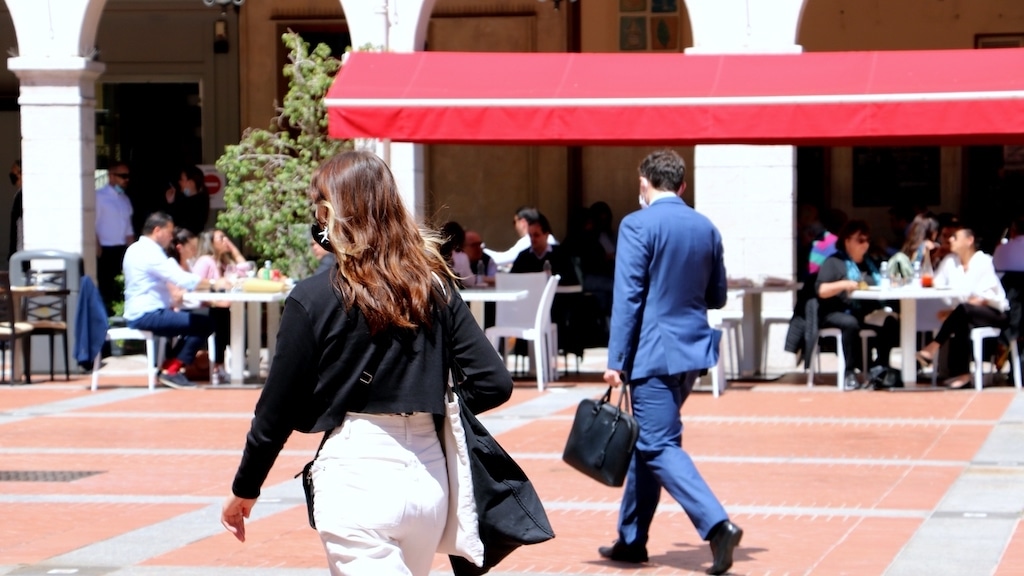5 key aspects of the job market in Monaco

IMSEE published a forty-page report on employment in Monaco on April 14. Spotlight on five of the aspects in the report.
The study by the Institut Monégasque de la Statistique et des Études Économiques (IMSEE – Monaco Statistics) begins with an unusual observation: almost twice as many people work in the Principality as there are residents. Monaco, a land of employment!
1. 14,000 jobs created in 10 years
Overall employment in the Principality has increased by 24.6% since 2013. This represents some 14,000 jobs that have been created in the space of 10 years. There are 8,873 more employees in Monaco’s private sector than ten years ago, an increase of 19%. Among the twelve major business sectors that make up the Monegasque economy, scientific and technical activities, plus administrative and support services now employ 3,396 more people than ten years ago, a rise of 33.9%. Construction experienced the second-largest growth in employees, with 1,836. Also on the podium, there are 28.0% more employees than in 2013 in the information and communication sector.
2. 89% of workers do not live in Monaco
The vast majority of employees working in the private sector in Monaco do not live in the Principality. In 2022, the proportion of commuters rose to 89.0%. Around 8 out of 10 employees live in France, some 43,700 workers. 25.5% of private sector employees reside in the Côte d’Azur capital, Nice, representing almost 13,900 workers. Menton accounts for 12.2% of employees, 6,654 people, and is in second place, ahead of Monaco (5,987). Next come the neighbouring municipalities of Beausoleil and Roquebrune-Cap-Martin, which account for 10.6% and 7.8% of the workforce respectively. Ventimiglia, with 2,300 employees, is ahead of the other two neighbouring towns of Cap d’Ail and La Turbie.
3. Nationalities
140 different nationalities featured among private sector employees in 2022. This number was 128 in 2013 and has increased steadily over the years. Unsurprisingly, France has the biggest contingent in the private sector, at 61.6% in 2022, or nearly 34,100 employees. They are followed by the Italians, who account for 15.4% of the workforce, around 8,500 people, and then the Portuguese, whose 4,000 employees represent 7.3% of the workforce. Employees of Monegasque nationality, who number around 1,000, represent less than 2% of the salaried population, as do the Romanians who recently arrived in the top five (1.5%), edging out the British for the first time.
4. More employers
With 6,357 private sector employers in 2022 compared to 5,376 in 2013, the number of organisations employing staff has increased by 18.2% over the period, representing 981 additional employers in ten years. With the exception of the year 2020, which saw a drop in activity due to the health crisis, the number of employers has grown steadily over the period 2013 to 2022. Only 38 companies have 200 or more employees in the Principality. Whereas 4792 businesses have fewer than 5 employees!
5. Self-employment is growing
Monaco has 5,767 active self-employed workers running 6,185 active businesses, an increase of 4.0% and 3.3% respectively compared to 31 December 2021. On average, a self-employed person had 1.07 jobs at the end of 2022.
Where do they work? In ‘Wholesale Trade’, for almost 1,000 people by the end of 2022, which is 15.6% of all business. This is followed by ‘Other specialised activities’ and then ‘Management consultancy’, which account for 13.5% and 9.5% respectively. “The population of self-employed workers is predominantly male… Only the ‘Hairdressing and other beauty’ group appears to be very clearly feminine with almost 8 out of 10 activities occupied by women. In contrast, the activities of Taxi operation, like those of Architectural and engineering activities, are almost exclusively male”, the IMSEE study tells us. “With 49% of activities held by men, the Paramedical professions remain the type of activity that is closest to parity.”













